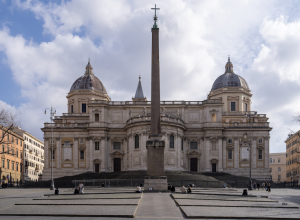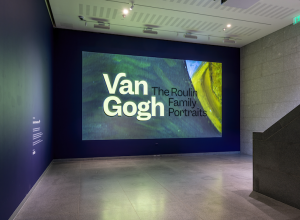
In today's world, professionals versed in art and design are in high demand, particularly those who can use their skills in both the fine arts and commercial worlds. Those looking to embark on a career in the arts have a huge range of options for their training and education. Once again, Art & Object delves into the top art schools and programs in the U.S. From public universities with state-of-the-art studios to solely arts-focused colleges with flourishing overseas programs, this list runs the gamut. With this list, we are looking at the West.
This final top five, showcasing the best art schools of the American West, is distinct in a couple of ways. This list includes some of the most diverse schools of this series.
Perhaps unsurprisingly, a majority of the schools in this listing are located in California and are situated in or just outside of Los Angeles. Therefore many of these schools boast a deep connection with the LA art scene and its countless student opportunities. Some of these schools also stand out in terms of the size of their visual and performing arts departments and this seems to correlate with a higher degree of general departmental resources.
To determine its final rankings, Art & Object's editorial staff weighed the following factors: degree and curriculum variety, quality of school museums, school renown, tuition cost (undergraduate, graduate, etc. if applicable), employment rate, graduation rate, internship opportunities, student body diversity*, surrounding art scene, cultural opportunities, and student statements. While Art & Object has strived to craft a list in the most objective manner possible, we recognize that measures of "best" could include many other factors. With that said, here are the Art & Object selections of the best art schools in the West.
You can find our rankings for the Southeast, Northeast, Southwest, and Midwest here.
*Editor’s Note: LGBTQ+ individuals may not always be accurately represented in gender data reported by institutions and organizations.
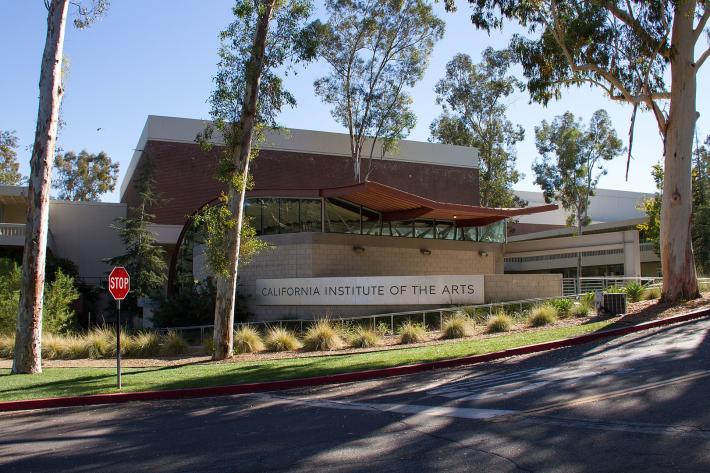
The California Institute of the Arts (CalArts), located in Santa Clarita, is the second smallest of this top five with around 1,520 enrolled students. The school offers over seventy different majors in performing, visual, and literary arts. CalArts’ Visual Arts program includes seven programs within the School of Art and six within the School of Film and Video.
With so many programs to choose from, students are encouraged to explore and think critically about the art they wish to make. Both graduate and undergraduate students may receive instruction across a wide range of media including installation, video, film, writing, performance, painting, drawing, printmaking, photography, digital imaging, and sculpture. A special emphasis is placed on individualized instruction and mentoring as students learn how to articulate ideas, develop personal methodologies, and establish an independent studio practice.
In the words of former student, Vashti Harrison, Film and Video MFA, Class of 2014: “CalArts is like its own little ecosystem and you feel that when you walk into the building. I came for a visit and tour on the admitted students weekend. Instantly, the atmosphere was inspiring. But the moment I felt it was a no-brainer, was when I saw the students’ work. I thought, 'They have a great faculty here and if I have the opportunity to learn from them, and become part of a personal community with these people, my work will certainly expand and flow and change. It’s really impressive.”
CalArts is moderately expensive compared to other schools listed. It’s fall 2021-22 tuition is $52,850. Although the school does not currently have holistic data on the employment rate of former students, it did share graduation and retention rates. The school’s six-year graduation rate sits at 61.4 percent and, between fall 2018 and 2019, 83.7 percent of freshmen re-enrolled.
CalArts shows its commitment to fostering an environment of equity and diversity through a variety of initiatives including specialized grants, programs, and identity projects. The school also keeps up an extensive and interactive factbook that holds data points on the current academic year as well as the last five years.
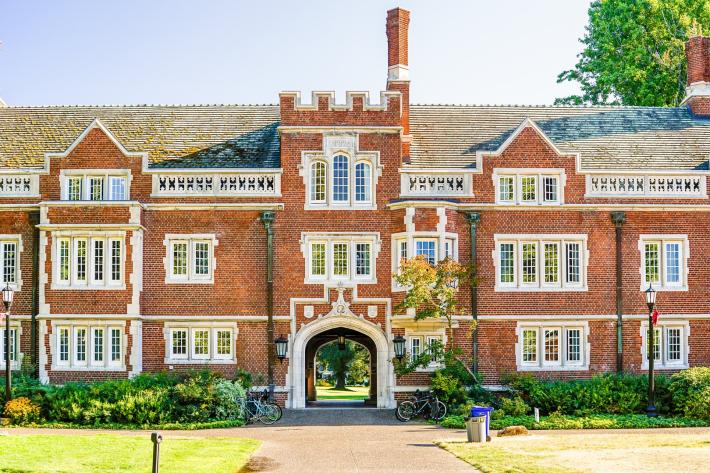
Reed College, of Portland, OR, is the smallest school of this top five with a student population of about 1,400. The Art Program at Reed has been structured in a manner that dually emphasizes art history and studio practice, calling them, “complementary and interrelated disciplines with a shared interest in the art object and its historical and theoretical contexts.” While students may focus on one or the other, they are still required to study both to some extent. Additionally, students from both sides come together to take a junior qualifying and a senior thesis exam.
Studio instruction is offered across seven types of media and art history courses cover regions across the globe and span from ancient to contemporary periods. According to the school, Reed’s Art Program produces approximately fifteen to twenty thesis students each year, ranking far above the college average. These students are required to work closely with a faculty advisor, typically meeting once a week throughout the year.
Reed is by far the most expensive school in this top five, with a tuition of $75,600. That said, about 58 percent of students at Reed do receive financial aid. The school also boasts a moderately high—compared to other schools listed—graduation rate of 78 percent as of the 2018-19 school year.
As is the case with most schools in today’s world, Reed has dedicated space and time to diversity statements and initiatives. Uniquely, Reed has an online resource guide for undocumented and immigrant community members. This suggests that the school would be a relatively safe and inviting place for such individuals.
Interestingly, Reed Alumni fill the ranks of typical gallery and museum directors and curators as well as the not-so-typical role of NASA designers.
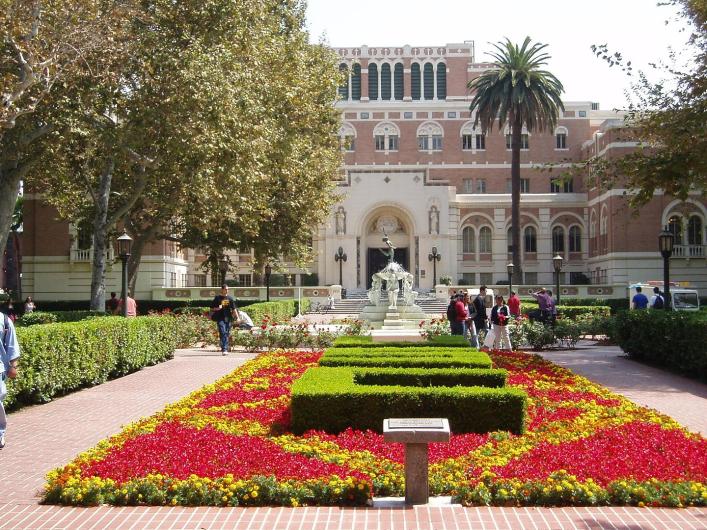
The University of Southern California, Los Angeles (USC) began offering art classes in 1883 and later founded its art school in 1895. The USC Gayle Garner Roski School of Art and Design is one of the oldest art schools in Southern California.
USC Roski offers a BA in Art, a BFA in Art or Design, and nine Studio Art and Design minors. The BA program and the Communications Design Minor both require crossover between Roski and other USC departments. The school directly connects students with internships and, as part of a larger research university, provides opportunities for cross-discipline research and collaboration with eighteen professional schools.
The school is centrally located within Los Angeles and, in the University's own words, “USC’s University Park campus is part of the city’s Downtown Arts and Education Corridor and is home to the USC Dana and David Dornsife College of Letters, Arts and Sciences and many professional schools.”
Roski produces around 660 undergraduates per year and USC as a whole is currently home to 46,00 students total—19,500 of whom are undergraduates. As a whole, the University is the biggest institution featured in this top five. Undergraduate tuition currently stands at $59,260, making it the second most expensive school here. Over the course of the 2019-20 fiscal year, USC awarded $681 million in financial aid.
According to most recent data available, USC as a whole has a 91.5 percent graduation rate and a 66 percent rate of employment alongside a 33 percent rate of enrollment in higher education after graduation. While all three numbers are high for this list, it is important to note that they reflect the University at large, not the Roski School.
The University is quite diverse with a student population that is 53 percent female, 22.6 percent international, and 29.4 percent white. According to most recent data, 22 percent of freshmen were first generation college students.
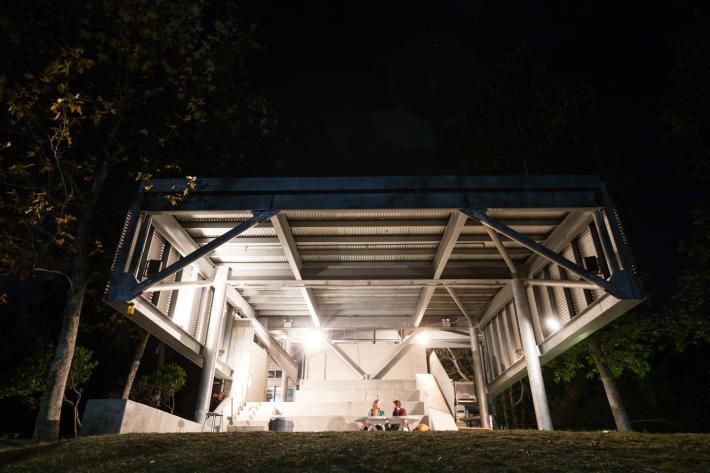
Founded in 1930 and located in Pasadena, California, the ArtCenter College of Design has two campuses that span 162.66 acres. Undergraduate students may pursue a BFA or BS across eleven undergraduate programs and graduates may choose from an MFA or MS offered across seven programs. Minors are offered in Business, Creative Writing, and Social Innovation and Joint MS/MBA degrees are offered in conjunction with Claremont Graduate University’s Drucker School of Management
The school encourages diverse and unique learning experiences via studio work. From trans-disciplinary studios to studios abroad, students are given concrete opportunities to collaborate with peers and faculty.
The school is relatively small with around 1,912 undergraduate students and 270 graduate students. Undergraduate tuition at the ArtCenter is currently $46,484 and graduate tuition is $49,090. Compared to the other schools of this top five, the ArtCenter is moderately expensive. In 2020, the school processed $57.7 million in aid and, in 2019, 29 percent of undergraduates received Pell Grants.
According to the most recent data available, the ArtCenter’s graduation rate (which is based on a six year program) is about 71 percent. One year after graduation, the class of 2018 undergraduates reported a 69 percent rate of employment and a 1 percent rate of enrollment in higher-ed. The 2019 graduate students reported a 75 percent rate of employment.
The ArtCenter is one of the most racially diverse schools of this top five and of all the schools covered thus far. As of fall 2020, its student population was 57 percent female and 12 percent white. Interestingly, the school also collects and shares diversity data on its staff, executive management, and trustees.
In 2018, the school’s eleven gallery and exhibition spaces mounted ninety-three exhibitions and hosted 24,000 - 30,000 visitors.
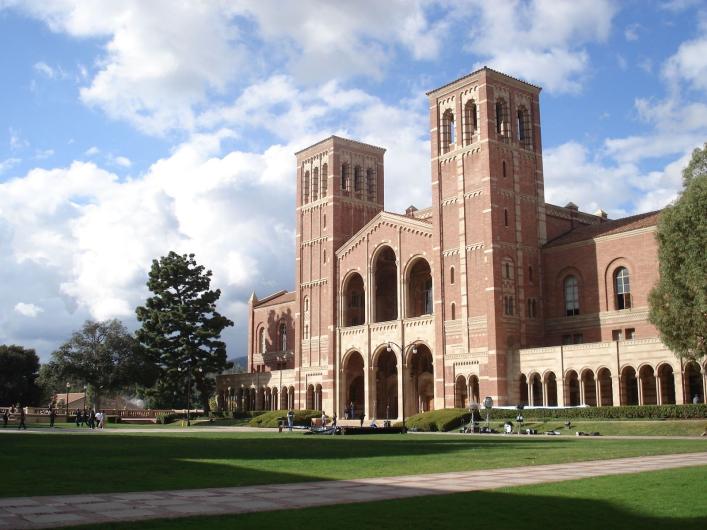
The University of California, Los Angeles (UCLA) is home to the School of the Arts and Architecture where students have access to leading programs in four degree-granting departments: Architecture and Urban Design, Art, Design/ Media Arts, and World Arts and Cultures/Dance. The BA program allows students to take foundational courses in six different media categories and then advance in whichever of these media they are most drawn to.
The University is home to a wide range of top-notch resources. From the UCLA Art & Global Health think tank to the collection of the Grunwald Center for the Graphic Arts, which features 45,000 art pieces dating from the Renaissance to present.
Students here have access to interdisciplinary opportunities inherent to a research university and, according to UCLA, “our eight research centers foster groundbreaking connections between the arts and other disciplines, bringing together creativity and research to address issues such as global health, climate change, urbanism and other critical challenges of the 21st century.”
UCLA is by far the largest school in this top five with over 45,000 students. It is also the most affordable school with an in-state undergraduate tuition of $13,240 and an out-of-state tuition of $42,994. Additionally, the university reports that more than half of its undergraduates receive financial assistance and 35 percent receive Pell Grants—one of the highest percentages within the nation’s top-tier, public universities.
The University’s Office of Equity, Diversity, and Inclusion (EDI) offers, among other things, resources for racial trauma as well as EDI Toolkits.

The California Institute of the Arts (CalArts), located in Santa Clarita, is the second smallest of this top five with around 1,520 enrolled students. The school offers over seventy different majors in performing, visual, and literary arts. CalArts’ Visual Arts program includes seven programs within the School of Art and six within the School of Film and Video.
With so many programs to choose from, students are encouraged to explore and think critically about the art they wish to make. Both graduate and undergraduate students may receive instruction across a wide range of media including installation, video, film, writing, performance, painting, drawing, printmaking, photography, digital imaging, and sculpture. A special emphasis is placed on individualized instruction and mentoring as students learn how to articulate ideas, develop personal methodologies, and establish an independent studio practice.
In the words of former student, Vashti Harrison, Film and Video MFA, Class of 2014: “CalArts is like its own little ecosystem and you feel that when you walk into the building. I came for a visit and tour on the admitted students weekend. Instantly, the atmosphere was inspiring. But the moment I felt it was a no-brainer, was when I saw the students’ work. I thought, 'They have a great faculty here and if I have the opportunity to learn from them, and become part of a personal community with these people, my work will certainly expand and flow and change. It’s really impressive.”
CalArts is moderately expensive compared to other schools listed. It’s fall 2021-22 tuition is $52,850. Although the school does not currently have holistic data on the employment rate of former students, it did share graduation and retention rates. The school’s six-year graduation rate sits at 61.4 percent and, between fall 2018 and 2019, 83.7 percent of freshmen re-enrolled.
CalArts shows its commitment to fostering an environment of equity and diversity through a variety of initiatives including specialized grants, programs, and identity projects. The school also keeps up an extensive and interactive factbook that holds data points on the current academic year as well as the last five years.

Reed College, of Portland, OR, is the smallest school of this top five with a student population of about 1,400. The Art Program at Reed has been structured in a manner that dually emphasizes art history and studio practice, calling them, “complementary and interrelated disciplines with a shared interest in the art object and its historical and theoretical contexts.” While students may focus on one or the other, they are still required to study both to some extent. Additionally, students from both sides come together to take a junior qualifying and a senior thesis exam.
Studio instruction is offered across seven types of media and art history courses cover regions across the globe and span from ancient to contemporary periods. According to the school, Reed’s Art Program produces approximately fifteen to twenty thesis students each year, ranking far above the college average. These students are required to work closely with a faculty advisor, typically meeting once a week throughout the year.
Reed is by far the most expensive school in this top five, with a tuition of $75,600. That said, about 58 percent of students at Reed do receive financial aid. The school also boasts a moderately high—compared to other schools listed—graduation rate of 78 percent as of the 2018-19 school year.
As is the case with most schools in today’s world, Reed has dedicated space and time to diversity statements and initiatives. Uniquely, Reed has an online resource guide for undocumented and immigrant community members. This suggests that the school would be a relatively safe and inviting place for such individuals.
Interestingly, Reed Alumni fill the ranks of typical gallery and museum directors and curators as well as the not-so-typical role of NASA designers.












